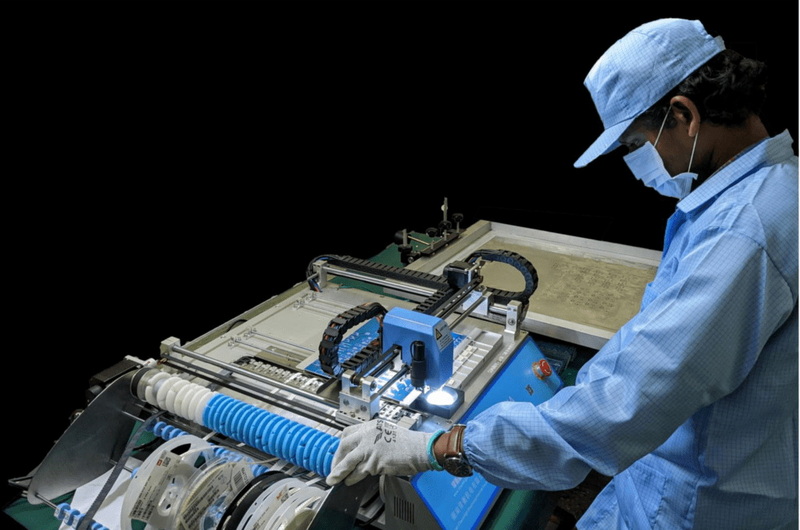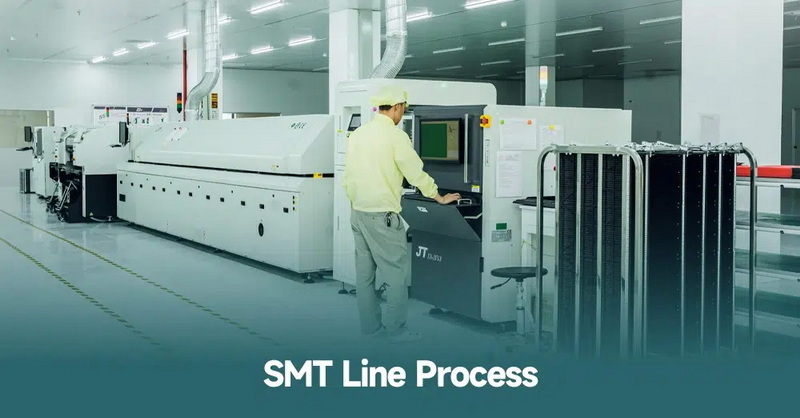Content Menu
● Understanding SMT Assembly Lines
● Key Strategies for Optimizing SMT Assembly Line Layout
>> 1. Assess Production Requirements
>> 2. Select Appropriate Equipment
>> 3. Design an Efficient Layout
>> 4. Implement Lean Manufacturing Principles
● Design Considerations for PCB Layout
>> 1. Component Placement
>> 2. Spacing Guidelines
>> 3. Use of Fiducial Marks
>> 4. Follow Design for Manufacturing (DFM) Guidelines
● Testing and Calibration
● Continuous Improvement in SMT Processes
>> 1. Automation
>> 2. Training and Education
>> 3. Process Monitoring
>> 4. Supplier Management
● Conclusion
● FAQ
>> 1. What are the key components of an SMT assembly line?
>> 2. How can I improve component placement accuracy?
>> 3. What is the importance of spacing between components?
>> 4. How often should I calibrate my SMT equipment?
>> 5. What are DFM guidelines?
● Citations:
In the rapidly evolving field of electronics manufacturing, optimizing the layout of a Surface Mount Technology (SMT) Printed Circuit Board (PCB) assembly line is crucial for enhancing efficiency, reducing costs, and ensuring high-quality output. This article delves into various strategies and best practices for optimizing SMT assembly line layouts, focusing on equipment arrangement, workflow efficiency, and design considerations.

Understanding SMT Assembly Lines
SMT assembly lines are designed to automate the process of placing surface mount components onto PCBs. The typical SMT assembly process involves several key steps:
- Solder Paste Application: Solder paste is applied to the PCB using a stencil printer.
- Component Placement: Automated pick-and-place machines position components on the soldered areas.
- Reflow Soldering: The assembled PCBs pass through a reflow oven where solder paste is melted to create electrical connections.
- Inspection: Automated Optical Inspection (AOI) systems check for placement accuracy and solder quality.
Key Strategies for Optimizing SMT Assembly Line Layout
1. Assess Production Requirements
Before setting up an SMT line, it is essential to evaluate production requirements. This includes:
- Volume of Production: Determine how many units will be produced daily or weekly.
- Types of Components: Identify the types and sizes of components that will be used.
- Complexity of Assemblies: Understand the complexity to choose appropriate equipment.
2. Select Appropriate Equipment
Choosing the right equipment is vital for maximizing efficiency:
- Solder Paste Printers: Select printers that ensure precise application of solder paste.
- Pick-and-Place Machines: Opt for machines capable of handling various component sizes and types at high speeds.
- Reflow Ovens: Choose ovens that provide uniform heat distribution and efficient soldering profiles.
3. Design an Efficient Layout
The layout of the SMT line should facilitate smooth material flow while minimizing bottlenecks. Consider the following:
- Linear Flow Design: Arrange machines in a linear sequence from solder paste application to inspection to ensure a continuous flow.
- Adequate Spacing: Maintain sufficient space between machines to allow for maintenance and operator movement.
- Ergonomics: Design workstations with ergonomics in mind to enhance operator comfort and productivity.
4. Implement Lean Manufacturing Principles
Incorporating lean manufacturing principles can significantly improve efficiency:
- Reduce Waste: Identify and eliminate any non-value-added activities in the production process.
- Minimize Setup Times: Streamline changeover processes between different production runs.
- Continuous Improvement: Foster a culture of continuous improvement where operators can suggest enhancements.

Design Considerations for PCB Layout
Optimizing the PCB design itself is equally important for successful SMT assembly. Here are some key considerations:
1. Component Placement
Proper component placement on the PCB can greatly impact assembly efficiency:
- Group Similar Components: Place similar components close together to minimize movement during assembly.
- Orientation Consistency: Align all components in the same orientation to simplify placement and inspection processes.
2. Spacing Guidelines
Maintaining adequate spacing between components is critical:
- Minimum Spacing Requirements: Ensure that spacing adheres to industry standards (e.g., ≥0.3mm for homogeneous SMD components).
- Thermal Management: Distribute larger components evenly to avoid thermal shadows during reflow soldering.
3. Use of Fiducial Marks
Fiducial marks are essential for accurate component placement:
- Placement of Fiducials: Ensure fiducial marks are placed at corners or critical points on the PCB for alignment during assembly.
4. Follow Design for Manufacturing (DFM) Guidelines
Adhering to DFM guidelines helps ensure that the PCB design is optimized for manufacturing processes:
- Footprint Accuracy: Use accurate footprints as per manufacturer specifications to ensure proper component placement.
- Avoid Overcrowding: Prevent overcrowding of components which can complicate soldering and increase defect rates.
Testing and Calibration
After setting up the SMT line, thorough testing and calibration are essential:
- Initial Testing: Run test boards through the entire production line to verify that all equipment functions correctly.
- Calibration Procedures: Regularly calibrate machines to maintain accuracy in component placement and soldering processes.
Continuous Improvement in SMT Processes
Continuous monitoring and improvement are vital for maintaining high efficiency in SMT assembly lines. Here are some strategies:
1. Automation
Automation has proven to be a cornerstone for enhancing efficiency in SMT manufacturing. It not only boosts production speed but also contributes to error reduction, reduces labor costs, and enhances flexibility within production lines. Implementing automated systems can streamline processes such as solder paste application, component placement, and inspection.
2. Training and Education
A well-trained team is key to error-free production processes. Continuous training ensures that employees possess the necessary skills and knowledge to effectively perform their tasks, improving both product quality and operational efficiency.
3. Process Monitoring
Implementing real-time monitoring systems allows manufacturers to track performance metrics such as cycle times, defect rates, and equipment utilization. This data-driven approach enables quick identification of bottlenecks and inefficiencies, facilitating timely corrective actions.
4. Supplier Management
Strong relationships with suppliers are crucial for ensuring timely delivery of high-quality materials and components. Regular communication helps align expectations and addresses potential supply chain issues before they impact production schedules.
Conclusion
Optimizing the layout in an SMT PCB assembly line setup involves careful planning, strategic equipment selection, efficient workflow design, and adherence to best practices in PCB design. By implementing these strategies, manufacturers can enhance productivity, reduce costs, and improve product quality in their SMT assembly processes.

FAQ
1. What are the key components of an SMT assembly line?
The key components include solder paste printers, pick-and-place machines, reflow ovens, and inspection systems.
2. How can I improve component placement accuracy?
Improving component placement accuracy can be achieved by using fiducial marks on PCBs and ensuring consistent orientation of components during layout design.
3. What is the importance of spacing between components?
Adequate spacing between components is crucial for preventing solder bridging during reflow soldering and ensuring proper thermal management.
4. How often should I calibrate my SMT equipment?
It is recommended to calibrate SMT equipment regularly, especially before starting new production runs or after significant maintenance work.
5. What are DFM guidelines?
Design for Manufacturing (DFM) guidelines provide best practices that help ensure PCB designs are optimized for efficient manufacturing processes, including accurate footprints and appropriate component spacing.
Citations:
[1] https://blogs.sw.siemens.com/valor-dfm-solutions/how-to-optimize-pcb-design-for-the-smt-assembly-process-flow/
[2] https://txjpcb.com/the-best-practices-for-smt-line-balancing-and-optimization/
[3] https://www.neodensmt.com/news/improve-smt-production-efficiency-48868013.html
[4] https://wellerpcb.com/pcb-layout-guidelines-for-smt-assembly-process-limits
[5] https://www.adoptsmt.com/en/efficiency-enhancement-in-smt-manufacturing/
[6] https://www.smtneoden.com/news/how-to-effectively-improve-the-production-efficiency-of-pcb-smt-machine/
[7] https://resources.pcb.cadence.com/blog/2020-how-to-optimize-pcb-design-for-smt-assembly-process-flow
[8] https://www.electronicspecifier.com/news/surface-mount-technology-best-practice-guide
[9] https://www.smtfactory.com/Optimizing-Efficiency-Strategies-for-A-Smooth-SMT-Line-Production-Process-id47463586.html
[10] https://jhdpcb.com/blog/efficient-smt-assembly/
[11] https://pcbtrace.com/techniques-to-streamline-and-optimize-pcb-assembly/
[12] https://asselems.com/en/best-practices-in-smt-assembly
[13] https://cogiscan.com/data-analytics-pcb-assembly-historical-performance-increase
[14] https://www.smtfactory.com/Perfecting-Your-SMT-Line-Layout-for-Efficiency-id47017676.html
[15] https://www.linkedin.com/pulse/rapid-smt-assembly-improving-efficiency-surface-oerzc
[16] https://www.smthelp.com/methods-and-measures-to-improve-the-production-efficiency-of-smt-production-line
[17] https://www.protoexpress.com/blog/tips-pcb-design-for-assembly/
[18] https://www.andwinpcb.com/optimizing-pcb-smt-assembly-for-enhanced-efficiency-and-quality/
[19] https://blogs.sw.siemens.com/valor/2021/08/02/is-new-infrastructure-the-only-way-to-improve-shop-floor-productivity/
[20] https://www.raypcb.com/line-efficiency/




















